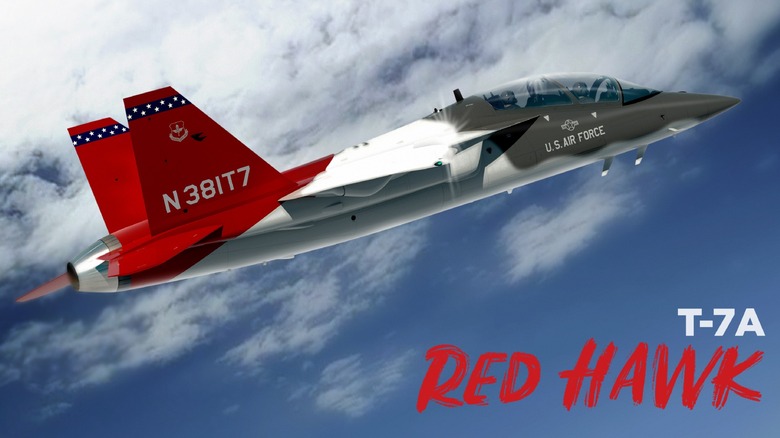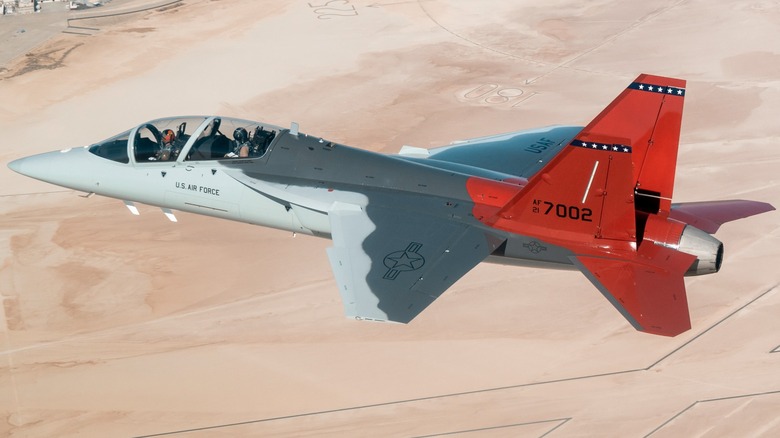The T-7 Fighter Jet Era Is Coming Fast – Here's How The US Air Force Is Preparing
If you joined the U.S. Air Force to become a fighter pilot today, odds are you'd spend a lot of time in the Northrop T-38 Talon. The two-seat supersonic trainer has been in use by various agencies since its introduction in 1961. Many prospective fixed-wing pilots also train on propeller-driven aircraft, such as the T-6A Texan II. Typically, a pilot learns the basics of flight on the Texan II, and if they're set to fly jets, they move on to the T-38.
After decades of service, the Air Force is ready to replace the T-38 with the Boeing–Saab T-7 Red Hawk. The modernized jet is a co-venture between the Boeing Company out of the U.S. and Saab out of Sweden. The initial contract calls for 351 T-7s at a cost of $9.2 billion. The planes are designed with maintenance in mind, and they're potentially modular, with various components to aid pilot training on systems for future missions. The Red Hawk gets its name from the Red Tail symbol found on the production aircraft, honoring the Tuskegee Airmen of WWII.
The Air Force has been preparing to receive its new jet trainer since the contract was awarded in 2018. Since then, the Air Force has outlined training plans, but it won't begin until around 2027. Still, the service received six test aircraft beginning in 2023 and is working to build a new training program around them, as the T-38's design is only useful for training aircraft that are no longer used.
The T-7 training jet brings modernization training to a new generation of pilots
The T-7 packs a lot of incredible capabilities as the Air Force's forthcoming new training jet. The current training plan is to receive a non-test aircraft on December 5, 2025, which will be delivered to Joint Base San Antonio-Randolph, Texas. Training of new pilots won't commence immediately, as the trainers themselves need to learn to operate the T-7. Once the Air Force's instructor pilots are familiarized with the new equipment, the maintainers have their jobs to do.
Maintainers must learn the ins and outs of every aircraft component, which puts a lot of wear and tear on the jet. The Air Force will receive its second T-7 in the Spring of 2026, and the pace of production should increase exponentially after that. By 2027, Randolph AFB plans to reach initial operational capability. It's at this time that new pilots will begin to train on the T-7, though not in Texas. The T-7 fleet will move to the 14th Flying Training Wing at Columbus Air Force Base, Mississippi.
Once there, training will begin as the Air Force receives between 48 and 60 new jets each year. The T-38 is an excellent trainer, but it was designed to train pilots on aircraft produced in the 1960s. We've come a long way since then, and the T-7 will bridge the gap, offering training on a modern, 5th-generation fighter, rather than a 20th-century 3rd-generation plane. New training will help orient pilots toward the more robust systems of the 21st century.

